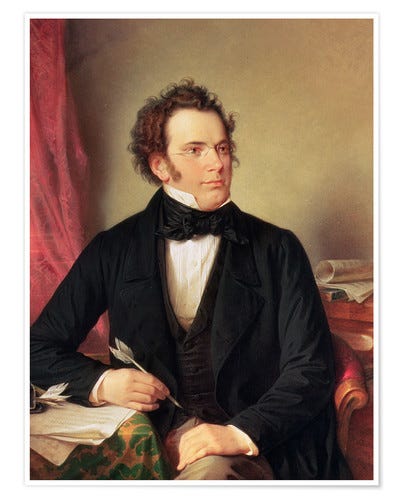
Composers often reserve specific keys for certain moods and emotions. It’s very easy for anyone to hear what I’m talking about — just google “Mozart E-flat,” or, “Beethoven C-minor,” and listen to the pieces that pop up in the results. What one begins to hear are the emotional similarities these pieces share, often regardless of when in their life that the piece was composed.
The key of G Major — for those of you who used to play music, it’s the key and scale with one sharp (f-sharp) — must’ve been very special for Schubert because three of his most beautiful pieces are written in it. What are these G Major moods and emotions? Here are some descriptors that come to my mind: gentle, quietly awestruck, modestly confident, shyly enraptured.
Schubert wrote his Mass №2 in G Major, D. 167 for his local parish in just one week in early March, 1815.
Schubert’s Piano Sonata in G major D. 894, Op. 78 was the last of his piano sonatas to be published during his lifetime. It was completed in October 1826. Robert Schumann described it as the “most perfect in form and conception” of his sonatas. While I equally love his last three sonatas, I can see where Schumann is coming from with this statement. What I particularly love is how fluidly the first theme in the first movement, which has a quiet nobility to it, imperceptibly melts into the lilting waltz of the second theme.
Schubert’s String Quartet №15 in G major, D. 887 was written in June 1826, but was published posthumously in 1851. If sound can convey hushed silence than this quartet full of it. Yet, there is also a dramatic sweep in this work that is almost symphonic in nature. The story that’s being told in an interior one, but it’s the interior of a great hero’s soul.
